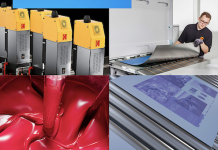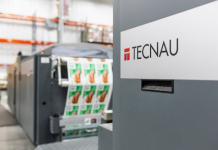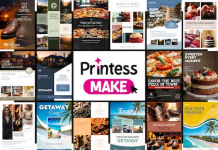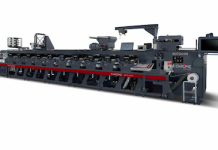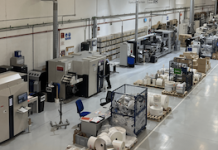According to Leon Minnie, manager of production print for Konica Minolta South Africa, there is a new sense of optimism among print service providers. The 2018 drupa Global Trends Report found that 91% of printers in 2017 considered their economic state to be good or satisfactory. Despite its obituary having been written many times, print is far from dead. What may be dying is the traditional idea of what print is.
Six commercial print trends – an exciting time to be in print:
Labelling demand grows exponentially
Labelling is probably the main reason for the continued health of the print industry. Practically every modern packaging solution will carry a branding or information message, which must be printed. The various packaging substrates and containers all require unique printing solutions, which are helping to drive innovation in the industry. This has led to growing diversification in the print field, especially as commercial printers move into label printing.
The rise of electrophotographic printing
Lithographic technology – long a mainstay of commercial printing – has not changed much over years gone by. It is a bulk, high-volume technology that can print millions of magazines or newspapers in an hour.
Today, however, we see a wider variety of customers requiring time and volume flexibility. Electrophotographic cutsheet printing is a digital solution that is filling this need. In the labelling space especially, electrophotographic printing allows for all kinds of bespoke solutions with key benefits that drive quality enhancement and diversification.
Industrial inkjet printing
Another trend – and one likely to overtake electrophotographic technology – is an industrial version of inkjet printing, allowing for bigger sheets, faster prints and higher quality on a wider variety of substrates.
The KM-1 press, for instance, uses UV inkjet technology and can print around 18,000 A4 sheets an hour. These presses are compact, fast, highly effective and affordable, which has helped to democratise the print industry.
In-house digital printing
The affordability and convenience of modern electrophotographic presses has also led to manufacturers acquiring their own printers. Chemical businesses, food manufacturers and appliance manufacturers are all looking at bringing their printing in-house.
Outsourced printing can lead to delays in the manufacturing process. With their own digital label presses, companies can now print in-house and synchronise their manufacturing and labelling. Branding can be updated on the fly as required and there is less transport, which has sustainability benefits.
Digital makes smaller print runs viable
Due to the sheer size of legacy litho solutions, customers were once forced to accept and pay for massive print runs. Now, thanks to versatile digital solutions, a client can request a job of almost any size – no project is too small.
On the one hand, this trend can cost jobs, as there is less demand for traditional printing trades. However, at the same time, the proliferation of new, small print shops has driven growth in the industry. Several companies have expanded from litho into digital and now profitably operate across both markets.
Low barriers to entry
Adding digital capabilities requires little change management. Compared to litho technology, digital printing is breathtakingly simple. With digital, the first print is in register and sellable. Machines clean themselves and all servicing is provided free of charge by technicians within hours.
Today, the providers of print products offer turnkey solutions on demand. This enables them to build maintenance and repair costs into the cost-per-page rate, with no further hidden costs. The modern print offering is affordable, fast, effective and accessible. This is an exciting time to be part of the industry. Print is not dying, it is simply evolving.
KONICA MINOLTA SOUTH AFRICA (+27 11) 661 9000 leonm@kmsa.com http://www.kmsa.com





